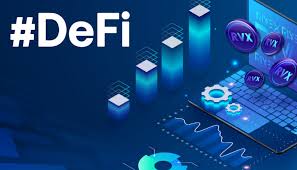Introduction
Decentralized Finance (DeFi) has transformed traditional lending and borrowing by removing intermediaries and offering innovative features like flash loans, yield farming, and automated liquidations.
One such feature gaining traction among DeFi users and institutional investors is collateral swapping.
This mechanism allows borrowers to change the asset backing their loan without needing to close and reopen the position—providing greater flexibility and efficiency in managing loan risk and portfolio composition.
This guide provides a professional-level understanding of collateral swapping, its workings, advantages, risks, and strategic use cases in the DeFi ecosystem.
What Is Collateral Swapping?
Collateral swapping refers to the process of replacing one form of collateral with another within an active DeFi loan. Rather than repaying a loan and starting a new one to change collateral assets, users can swap the underlying asset in real-time, depending on market conditions or risk tolerance.
For example, a borrower who has locked ETH as collateral for a stablecoin loan may choose to swap it with stETH (staked ETH) or WBTC (Wrapped Bitcoin) without triggering loan closure.
How Collateral Swapping Works
The process typically involves smart contracts integrated into lending protocols like Aave, Compound, or MakerDAO. Here’s a high-level breakdown:
- Initiation: The borrower selects a new collateral asset they want to swap to.
- Valuation Check: The protocol verifies if the new collateral meets the loan-to-value (LTV) requirements.
- Atomic Swap Execution: Using smart contracts (or a flash loan mechanism), the system simultaneously:
- Withdraws the existing collateral,
- Swaps it via a DEX (like Uniswap or Curve),
- Deposits the new collateral, all within one transaction.
- Rebalancing: The position is updated, reflecting the new asset and recalculated risk metrics.
Some platforms even allow automated collateral swaps during volatility to avoid liquidation.
Benefits of Collateral Swapping
1. Risk Management
Borrowers can shift to more stable assets during market downturns, reducing the chance of liquidation.
2. Yield Optimization
Users can swap into yield-bearing assets (e.g., stETH, aTokens) to earn passive income while collateralized.
3. Tax Efficiency
Avoids taxable events in certain jurisdictions since the position is not closed or sold outright.
4. Capital Efficiency
Minimizes transaction fees and avoids the need for multiple gas-heavy operations.
Use Cases in Professional DeFi Strategy
1. Institutional Portfolio Rebalancing
Institutions managing digital asset portfolios can actively rebalance loan collateral in response to macro events or changing asset correlations.
2. DeFi Arbitrage Opportunities
Traders may swap to underpriced collaterals to exploit arbitrage across lending platforms or between synthetic assets.
3. Staking Integration
Professionals can enhance returns by switching to staked or derivative tokens without compromising loan positions.
Risks and Considerations
1. Smart Contract Vulnerabilities
The entire process depends on the integrity of smart contracts. Exploits in flash loan or DEX integration can expose funds.
2. Oracle Price Manipulation
Since collateral valuation depends on real-time price oracles, manipulation or delays in price feeds may lead to incorrect LTV calculations.
3. Slippage and Liquidity Issues
Large swaps on low-liquidity assets may result in significant slippage or incomplete swaps.
4. Platform Limitations
Not all lending protocols support seamless collateral swaps, and some may have rigid LTV rules or limited asset compatibility.
Protocols Supporting Collateral Swapping
- Aave: Offers native collateral swapping and integrates flash loans for seamless execution.
- DeFi Saver: Automation tool that enables manual and automated collateral swaps across various platforms.
- Instadapp: Offers smart layer features, including collateral swap on platforms like Maker and Aave.
- Liquity: Allows collateral swaps indirectly through integrations and automated strategies.
Best Practices for Professionals
- Monitor Market Conditions: Use analytics dashboards to track volatility, correlation, and yield performance of potential collateral assets.
- Automate with Caution: Consider automated collateral management tools but audit their smart contracts and backtesting rigorously.
- Diversify Collateral: Use multi-collateral positions where possible to minimize the impact of any single asset’s devaluation.
- Stay Compliant: Understand the tax and regulatory implications of swapping assets within your jurisdiction.
Conclusion
Collateral swapping is an advanced but powerful tool in the DeFi landscape, offering greater agility, efficiency, and risk control. For professionals and institutional investors, it enhances the flexibility of debt management strategies and provides a critical edge in volatile or yield-driven markets.
As the DeFi ecosystem matures, we can expect more protocols to offer seamless, low-cost collateral swaps with enhanced security and better user experience—making this a staple feature for the next generation of decentralized finance.
Join Gen Z New WhatsApp Channel To Stay Updated On time
https://whatsapp.com/channel/0029VaWT5gSGufImU8R0DO30


